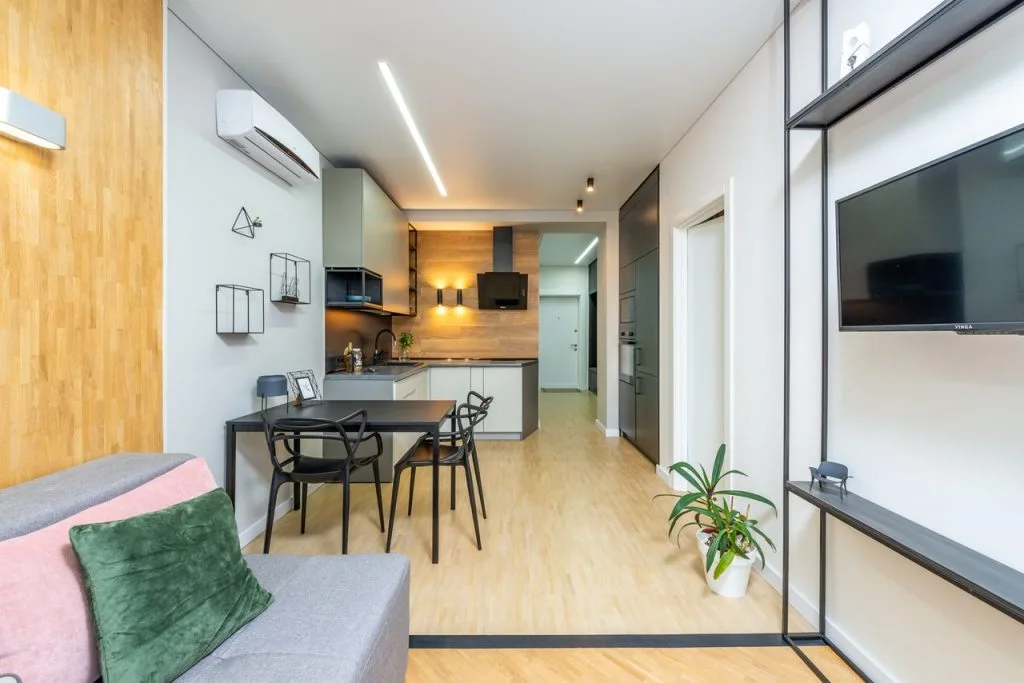An air conditioning system is a vital appliance in enhancing your home’s indoor air quality and comfort. Understanding the basic operation of the system is useful in dealing with it. Besides, it is also vital to find a suitable HVAC repair expert when you know how it works and the underlying issue.
Fortunately, all air conditioning systems operate under the same principle. The process of cooling your home involves trapping hot from one section and releasing it outside into the atmosphere. The hot trapped air is replaced with cool, dry, and chilled air leaving you to enjoy high-quality indoor air and superb comfort.
The ambient air is drawn to the air conditioning system via the condenser. The condenser plays the same role as the radiator in motor vehicles, but instead of water, it uses gas as a refrigerant. The air goes through three significant phases around the system. The evaporator houses a sub-cooled refrigerant onto which air blows over via the veins. The outcome is dry, chilled air, which is released into your home as the condenser blows the heat over the high-temperature gas through the veins. The collected heat passes over and is discharged outside, away from your home.
Air Conditioning System Basic Operations
An air conditioner cools your home by trapping and releasing heat from the indoor air into the atmosphere. It contains a chemical refrigerant that absorbs the excess heat and pumps it through its piping system to the external coil. It is also designed with a fan (found outside the unit) that blows air over the hot coil, transferring heat from the indoor air into the atmosphere. A typical air conditioning system comprises of five mechanical components, namely:
Condenser
Most central AC units work based on split systems. The latter means that they come with a condensing unit known as the ‘hot’ side and the ‘cold’ side. The condensing unit is found outside your home, and it is made up of a fan, compressor, and condensing coil. The ‘cold’ side, on the other side, is found inside your home.
The cold side comprises a cold coil and an expansion valve. Besides, it is also part of your furnace or any other type of air handler which blows air through the evaporator coil for cooling. It is this cooled air that is released into your home via a series of air ducts. The window AC units also operate on the same principle. However, one significant difference is that the hot and cold sides are housed within the same unit.
Read next: Steps to Pick the Right Air Conditioner Installer
Compressor
The compressor is the most significant part of your air conditioning system. The thermostat controls it and pumps the refrigerator throughout the system. Its goal is to maintain low pressure and low temperature while keeping the refrigerant in gaseous form. Besides, the compressor should also compress the gas and raise both the pressure and temperature of the refrigerant as desired. The gas at high pressure and high temperature is then pushed into the condenser coil.
Condenser Coil
It is a series of pipes connected to a fan that release the hot air from your home outside. The refrigerant passage through the condenser coil and the cooler outside air over the coil leads to absorption of heat from the former. The refrigerant eventually condenses from gas to liquid as the high pressure and high-temperature liquid hits the expansion valve.
Evaporator Coil
It is a series of pipes connected to the air handler or furnace. The furnace blows indoor air across the coil, which enhances the absorption of heat from the air. The cooled air is released back into the home via the air ducts, and the refrigerant flows back to the compressor for the cycle to start over.
AC Filters
For the effective performance of your air conditioning system, you should constantly clean your filters and replace them often. Clogged and dirty air filters compromise the normal functioning and efficiency of the entire system. Such air filters obstruct the airflow, allowing dirty air to flow directly into the evaporator coil, thereby impairing the coil’s ability to absorb heat.
The filters are located along the return duct’s length and can be easily placed near furnaces, walls, ceilings, and in the AC itself. While some of them are reusable, others must be replaced when they get damaged. AC experts recommend replacing your air filters every two to three months in the colder months and dusty settings. The presence of pets in your home and constant use of your AC also require you to replace your air filters more often. For convenience, you should always have spares at home if you use disposable filters to replace the faulty ones any time they get damaged.
Read next: Easy Ways to Get That Luxury Hotel Bed Feel at Home
Reasons Why You Should Never Attempt DIY AC Repair
With all the popularity surrounding DIY repair tasks, you may be easily tempted to apply the same when your HVAC fails. There are multiple videos on the internet to support DIY AC repair. But what are some of the reasons why HVAC repair is not DIY recommended by experts?
Lack of The Required Knowledge, Skills, and Equipment
HVAC systems comprise multiple interconnected units and parts that work together to cool your home. Without adequate training and equipment, it is impossible for you to successfully pull apart the parts, rectify the issue and pull them together. Therefore, you should call an expert from a reputed HVAC company such as Modesto air conditioning company to work on your system anytime if there is damage.
It May Damage Your System Further
ACs are complex systems that require adequate skills, knowledge, and experience to handle them and diagnose the problem. Working on them blindly puts your system to further risk of damage, making a certified and experienced expert your ideal choice.
In addition to the above, DIY AC repair is also risky and may void your warranty. These are some of the reasons why you should never try a DIY repair on your AC system. Always call in a professional anytime it fails working or you see signs of underlying issues. Some of the most popular signs of HVAC failure include weak airflow, warm air in the home, and noises and sounds from the system.







